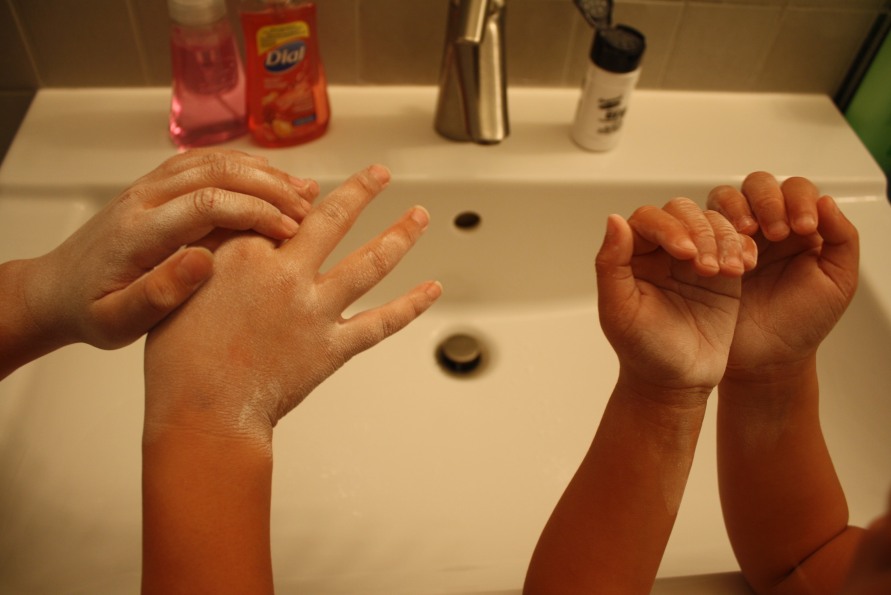You’ve been told to sing “Happy Birthday” while you wash your hands. By the time you finish the song, your hands will be clean.
You can sing several rounds of Happy Birthday and your hands will likely still not be clean! It’s not how long you wash your hands, but how well you wash your hands that counts.
Hand washing from an Infection Prevention Nurse’s View
Durning my nursing career, one of the areas I worked was as an Infection Prevention Nurse for the Veteran’s Administration Medical Center (VA). Yes, I took extra epidemiology classes and was tested to see how much I knew. I tracked all the lab results from the hospital and all the outpatient clinics in our vison. I investigated each lab report that showed one of our veterans had an infection. It was necessary for me to make sure that the infection was not acquired during a hospital stay. I would review a couple hundred reports daily.
Once a year the VA would have a health fair for the employees. Early on the staff learned to dread coming to my station. You see, they had to wash their hands. “What’s the big deal you ask?”
Steps to hand washing per nursing protocol
Wet your hands with running water — either warm or cold. Apply liquid, bar or powder soap to a cupped hand. Lather well. Rub your hands, palm to palm, vigorously for at least 20 seconds. Remember to scrub all surfaces, including the backs of your hands, wrists, between your fingers and under your fingernails. Rinse well.
Wash your hands after going to the bathroom with soap and water. Hand sanitizer is not recommended. Anytime you come in direct contact with an individual make sure your hands are cleaned. Having said this, wash your hands anytime they become soiled.
That doesn’t sound too hard does it? Are you sure about this?

Let’s talk alcohol
Glo Germ: the dreaded hand washing tool
As I stated earlier, the staff at the VA dreaded coming to my station for the employee health fair. The first time a nurse or doctor would come to my Infection Prevention station, they would be rather cocky. We all know how to wash our hands. So, they thought.
There’s a very effective teaching tool I would use call Glo Germ. Yes, you got it. When this gel was applied to the hands, I would shine an ultra-violet light on the individual’s hands. This liquid or gel contains the plastic simulated germs, and the lamp illuminates them to test the effectiveness of your (and your workers’) hand washing skills. Lord help you if you have dry cracked hands! Shocking isn’t it? This is what the hands look like after applying the gel.

Afterwards, one’s hands were washed and the surfaces appeared clean. However, the ultra-violet light tells a different story. The discovery of the remaining germs will cast a new light on your cleaning effectiveness.
Once the hands were washed and dried, I would again shine the ultra-violet light on the freshly washed hands. Surprise, surprise, traces of simulated germs were still on the surface of the nurse or doctor’s hands! Often times, the medical staff would have to wash their hands 2-3 times to remove the gel.

This what the hands looked like after washing the Glo Germ off. It shows that this individual had to rewash their hands.
Summary
Above all, remember, it’s not how long you wash your hands, but how well you wash your hands.

No comments